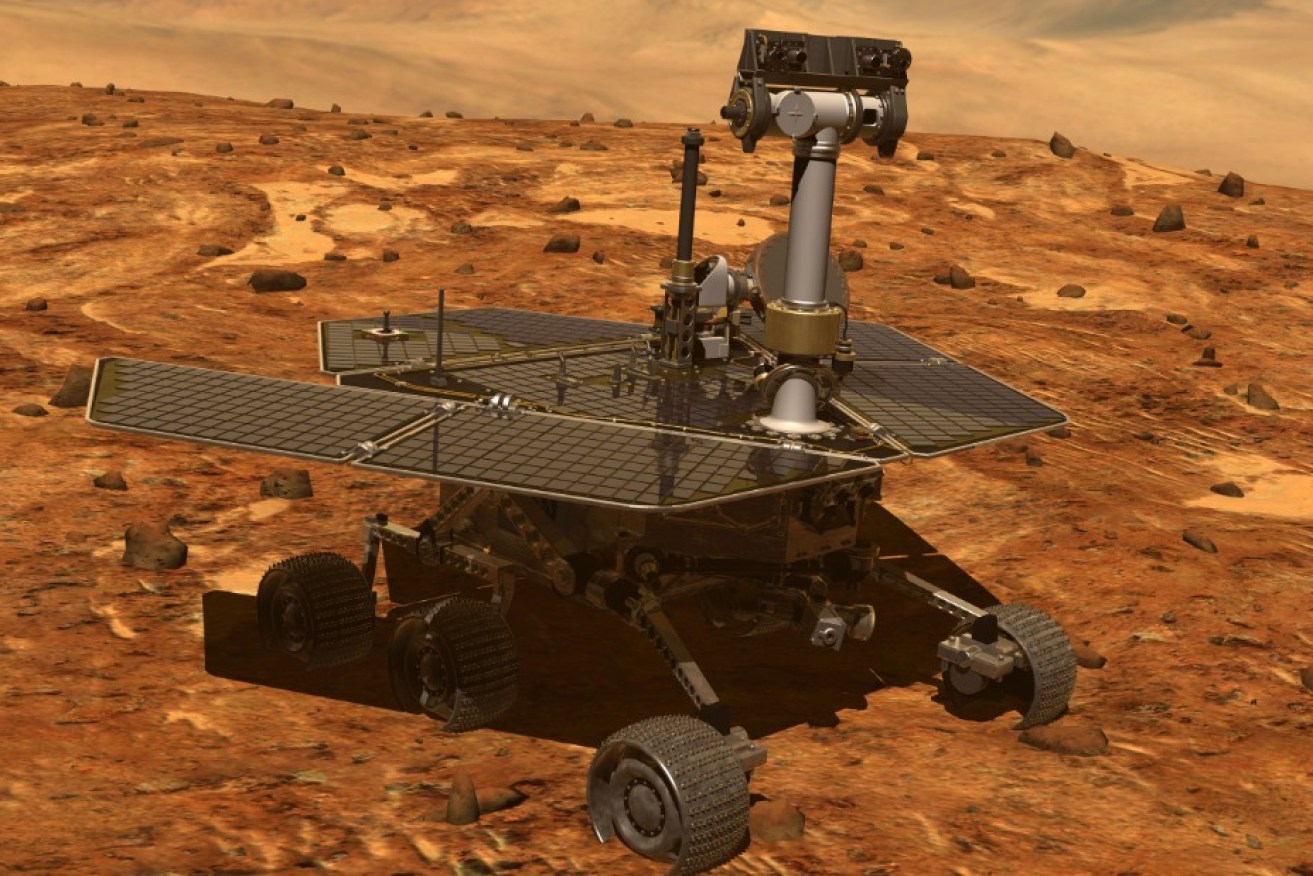NASA officially pronounces Mars rover Opportunity dead


Opportunity was originally expected to last just three months. Photo: NASA
NASA has pronounced its longest-running Mars rover, Opportunity, officially dead, 15 years after it landed on the red planet.
The six-wheeled vehicle was built to operate for just three months and travel just 900 metres.
But it kept going and going until it was finally doomed by a ferocious dust storm eight months ago.
Flight controllers made numerous attempts to contact it and sent one final series of recovery commands on Tuesday night, accompanied by one last wake-up song, Billie Holiday’s I’ll Be Seeing You.
There was no response, only silence.
#ThanksOppy for being the little rover that could! A planned 90-day mission to explore Mars turned into 15 years of ground-breaking discoveries and record-breaking achievements. Here's a look: https://t.co/e32XC64e3C
— NASA (@NASA) February 14, 2019
Remarkably agile until communication ended last June, Opportunity roamed a record 45 kilometres around Mars.
Opportunity and its long-dead twin rover, Spirit, found evidence that ancient Mars had water flowing on its surface and might have been capable of sustaining microbial life.
The rover, which outlasted all expectations since it landed on Mars in January 2004, helped find convincing geological signs that water once flowed there.
To be taken out by one of the most ferocious storms on Mars in decades: “That’s an honourable death,” Steven Squyres, the mission’s principal investigator, said on January 30.
Opportunity’s its twin rover, Spirit, also bounced to a safe air bag-cocooned landing in 2004, but on the opposite side of Mars.
Spirit became ensnared in a sand trap in 2009 and stopped communicating in March 2010, unable to survive the Martian winter.
Opportunity continued trundling across the Martian landscape for more than 45 kilometres.
Instead of just 90 Martian days, Opportunity lasted 5111, if they are counted up until it sent its last transmission. (A Martian day is about 40 minutes longer than an Earth day.)
What was your reaction to today’s #MarsLanding? 🚀
STEP 1: Reply with a GIF or photo of your reaction
STEP 2: See how others reacted by taking a look at this @Twitter moment: https://t.co/39T6BFwgNj pic.twitter.com/6YULrFsiEs— NASA (@NASA) November 27, 2018
In November, a NASA spacecraft designed to burrow beneath the surface of Mars landed on the red planet after a six-month, 480 million-kilometre journey and a perilous six-minute descent through the planet’s atmosphere.
The three-legged InSight spacecraft reached the surface after going from 19,800km/h to zero in six minutes, using a parachute and braking engines to slow down.
It was NASA’s ninth attempt to land on Mars since the 1976 Viking probes. All but one of the previous US touchdowns were successful.
NASA last landed on Mars in 2012 with the Curiosity rover.
By examining the interior of Mars, scientists hope to understand how our solar system’s rocky planets formed 4.5 billion years ago and why they turned out so different – Mars cold and dry, Venus and Mercury burning hot, and Earth hospitable to life.
-with AAP








